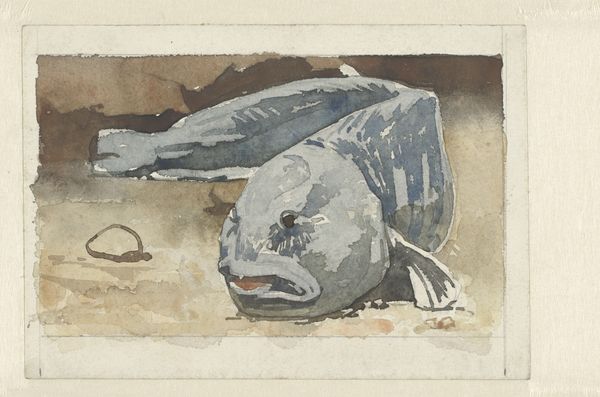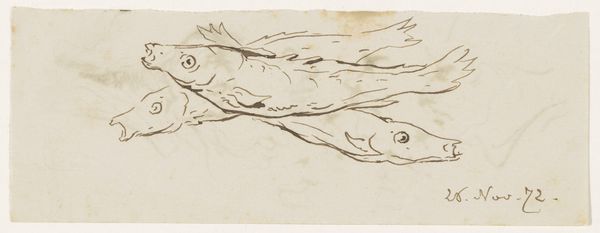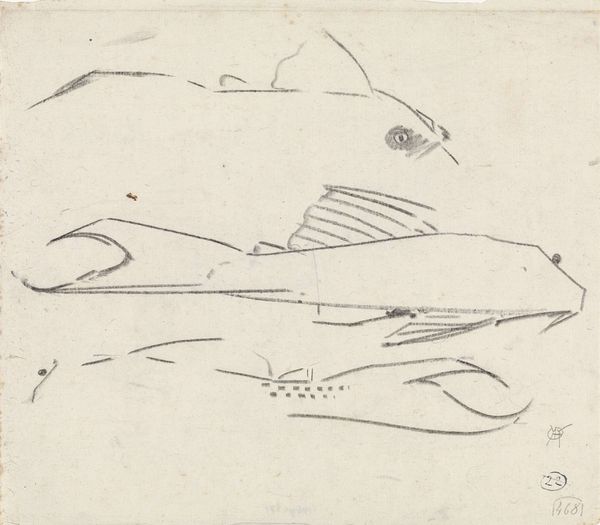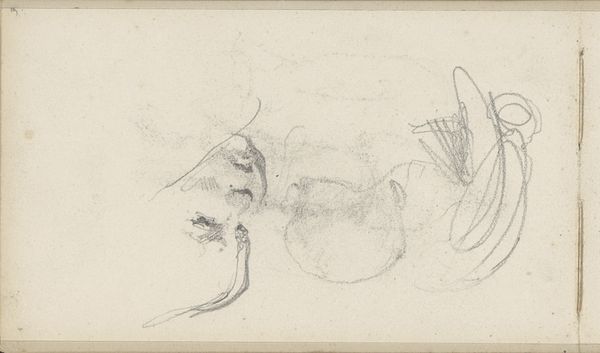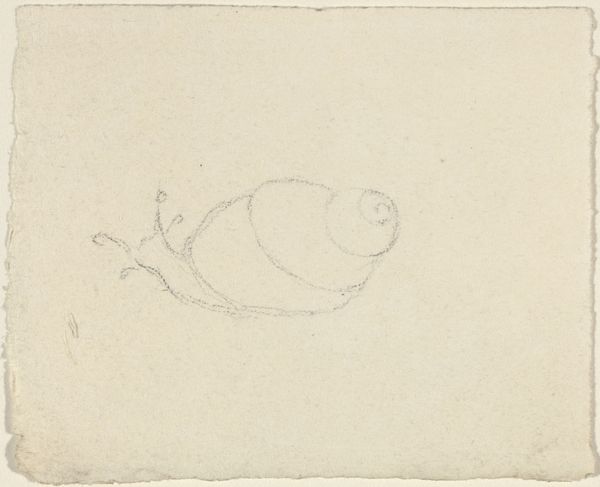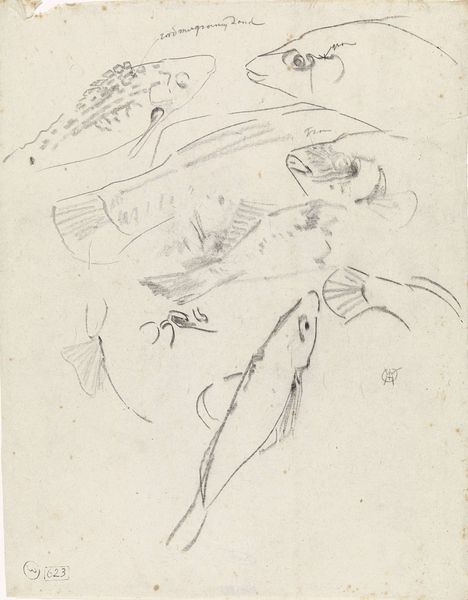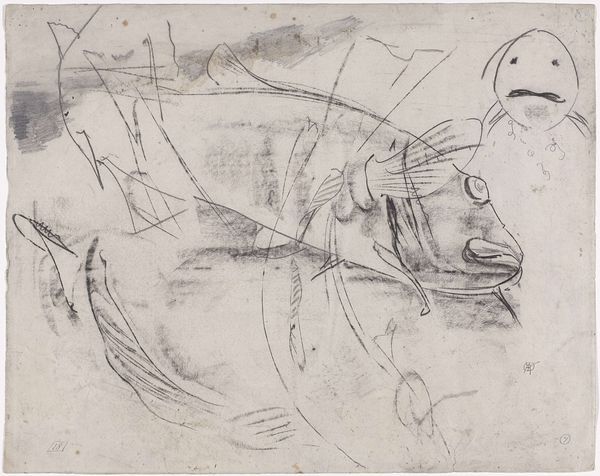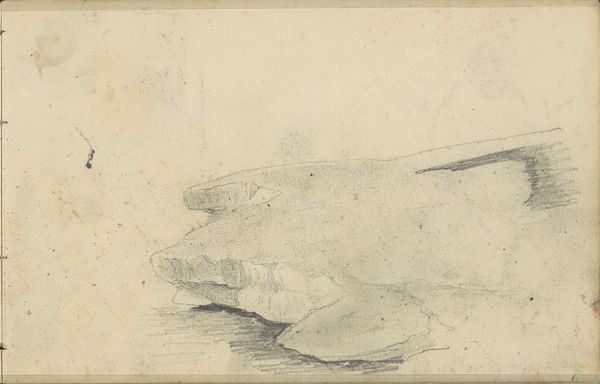
Dimensions: height 255 mm, width 354 mm
Copyright: Rijks Museum: Open Domain
Willem Witsen made this watercolor called 'Compositie van vissen' - meaning 'Composition of Fish' - some time before his death in 1923. It's a still life of three fish heads. While seemingly simple, this work speaks to the changing status of the still life genre in the late 19th and early 20th century. It was a period when artists, emboldened by the rise of impressionism, were keen to demonstrate their radical modernity. At the time, the Dutch art world was deeply institutionalized. Artistic production was largely centered on the Hague School, a group of artists devoted to realistic depictions of rural life. By turning to unusual subjects and emphasizing the sketchy quality of his brushwork, Witsen challenges the traditional academic standards upheld by institutions like the Pulchri Studio, a society of The Hague artists. Looking at artists' letters and exhibition reviews from the period helps us see how this seemingly innocuous image was actually a statement of artistic independence. Without attention to such social and institutional contexts, we would be blind to the revolutionary impact of art such as this.
Comments
No comments
Be the first to comment and join the conversation on the ultimate creative platform.
